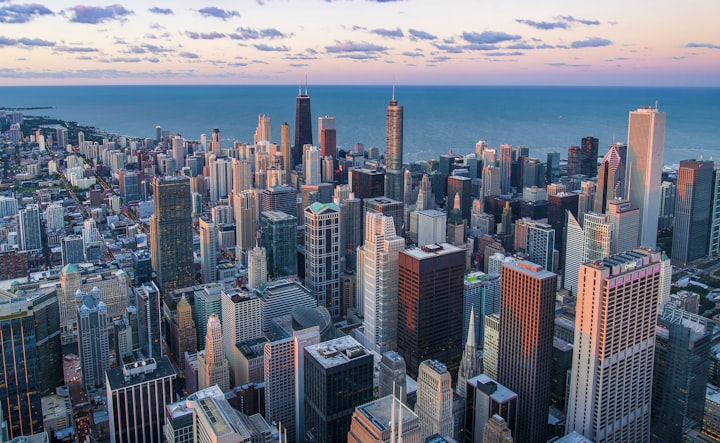Death Stranding, Covid, and a people struggling to find meaning in a disaster.
Hideo Kojima's breakthrough game Death Stranding found popularity amid a global pandemic.

Death by Covid is a slow painful affair. About 2-5% of Covid patients die 2 weeks to several months after positive diagnosis is confirmed. Usually, by the time they’re dead, hospitals have tried everything from amputations to ventilators to keep these patients alive. Covid lowers the amount of oxygen in the blood, forcing the body to cut off oxygen supply to limbs and non-vital functions. Sepsis, infection, and decaying tissue forced many Covid patients to endure traumatic and painful surgeries, surgeries that often proved fruitless. Talk to anyone, and chances are they know someone who succumbed to Covid-19. Never before in our nation’s modern history has one affliction claimed such a vast number of human lives in such a short span of time. By comparison the opioid epidemic claimed 500,000 lives over the span of 20 years. People of all ages, nationalities, races, and religious affiliations crumbled under the weight of severe Covid infection.
The sheer scope of the pandemic left America with far more questions than answers. Covid is a wolf in sheep's clothing. Coronavirus is the culprit behind 85% of common colds. It’s not something we usually tremble in fear over catching. Humans have been battling coronavirus infections for centuries. Yet, now, all of a sudden, as a nation we are faced with the shared trauma of watching hundreds of thousands of people die in just one year’s time, all perishing at the hands of an invisible enemy, a viral mutation that turns our own immune systems against us. The death count isn’t over yet either, rising by several hundred daily, despite millions of people receiving vaccinations every day.
It was amid the pandemic that Hideo Kojima’s visionary video game Death Stranding found its footing. Death Stranding released just before the pandemic, and while many touted its innovative gameplay, overall the response was underwhelming. Some gamers called it a walking simulator, while others felt it was downright boring. The game tells a wildly creative and ambitious story. Sometime in the near future, humanity is pursuing the use of chiral energy. Chiral energy seems overly promising, able to power entire cities without emitting harmful CO2. But where did chiral energy come from? What humanity didn’t know, they were actually tapping into the quantum energy signature of the afterlife when harvesting chiral energy. This over harvesting of metaphysical energy led to the death stranding, a singular event that merged the worlds of the living and the dead, with disastrous consequences.
In the world of Death Stranding, human beings live in remote cities called Knots, fully quarantined from one another and the outside world. Across the country, entities known as BTs (beached things) roam, and a single BT can pull a living person into the afterlife, triggering what is called a void out, a massive explosion that decimates everything in a mile radius. People have grown suspicious, angry, violent, and turned inward, allowing animal impulses to overtake their previously rational behavior. Before the pandemic, the world of Death Stranding seemed like an impossible place. Post the pandemic, we can almost taste exactly what the world of Death Stranding looks and feels like. This is perhaps why the game’s popularity surged as Covid raged around the world. Suddenly, we knew what a worldwide catastrophe looked like. It wasn’t pretty.
Yet, there’s another reason why Death Stranding may have found solid footing during the pandemic. The game deals with complex questions about what happens when we die. Is there an afterlife? Do we retain memories of our experiences on Earth? Do people get a second chance at life, based on how they lived the first time around?
In the world of Death Stranding, every person has their own beach, a sort of purgatory they drift off too upon death. Here, they await entry into the next segment of the afterlife. The game doesn’t go too far into what that next segment is, but it does define the afterlife as taking place in stages. Instead, it focuses on the beach, this purgatory, and what forms each person’s individual beach. Essentially, it’s a visual, material representation of who you are as a person. Naturally, the better your core fundamentals are, the better the beach you occupy after death occurs. When the Death Stranding hits, all the souls awaiting entry into the afterlife on beaches are then merged with the world of the living. Needless to say, they aren’t happy about it.
The pandemic has left our population wondering about life after death more than ever. Mediums (specialized psychics who report an ability to commune with the dead) claim they’re busier than ever. Infamous aerospace billionaire Robert Bigelow has suspended his study of unidentified aerial phenomena to study life after death. Netflix debuted the show After Death to great fanfare. All around us, the question of what happens after this life seems more pressing than ever.
So, what do we know about the afterlife, and can we confidently say it’s likely life extends on beyond death? First, there are millions of Americans that have had near death experiences (NDEs). In these instances, someone is pronounced clinically dead, sometimes for a few minutes, sometimes for an hour or more. Most NDEs report something similar. A long, bright hallway, flashes and memories from their previous life, meeting celestial appearing entities, and a sense of interconnectedness. NDEs claim that time seems to stop, slow, or accelerate at the time of their death, and some feel they were somewhere else for days, weeks, or more, only to learn upon resuscitation they were gone mere minutes. NDEs occur across socioeconomic, ethinc, religious, and gender based groups. In short, nearly any member of any segment of any society has had an NDE. Trying to calculate all of them would be impossible.
It would be easy to write NDEs off as some sort of bizarre, yet biological, function of brain chemistry at the time of death. Yet, there is neuroscientific evidence to support that something happens to a person at the time of death, something beyond the physical model of dying. In his book Immortal Why Consciousness is not in the Brain famed Italian neurosurgeon Dr. Sergio Canavero makes the case that consciousness leaves the body at the time of death. He reports odd brain activity, usually around thirty minutes after someone dies. At the time of death, brain activity stops. Yet, if the dead person is hooked up to a monitoring device, about thirty minutes later indicators light up and the level of activity in the brain is on-par with someone who is awake. Sometimes, it far exceeds the reading of someone who is engaging in a very alive physical exercise.
Canavero doesn’t believe consciousness lies in the brain at all, but simply that the brain is a filter for our physical existence. He likened the brain to a cable box, simply deciphering and filtering the signal of consciousness so that we can experience physical life. The consciousness however comes from somewhere else. Canavero doesn't know where, but he’s certainly convinced that based on scientific testing, it doesn’t originate in the brain.
To further complicate matters, Hospice care providers report odd symptoms as the elderly and terminally ill approach death. Often, when death is a matter of days away, elderly patients will report seeing and engaging with deceased family members. Children who don’t have any deceased immediate family often report seeing and engaging with deceased pets. It’s a widespread phenomena and the vast majority of hospice providers have witnessed it, firsthand, over and over.
Then, there is the curious case of mediums. Sadly, mediumship is so often hoaxed that many mediums are shrouded in controversy and cataloged as fakes. Yet, over the years, several mediums have grown in popularity due to their ability to accurately appear to have conversations with people on the other side. Sadly, mediums don’t have any hard answers about life after death either, but they have made some careful observations. One, is that after death an individual's perspective changes. Mediums claim to have spoken to many spirits, many of which have been dead for decades. Mediums feel that people move into the afterlife with their personalities intact, however they've undergone a massive change of perspective. Most mediums claim this perspective change is so intense, that it’s almost difficult to understand or contend with it while living.
Another observation mediums have made is that overall, spirits report that the afterlife is a happy, even joyful place of learning, growing and preparing for something new. In this way Death Strandings ideas about a staged afterlife might not be too far off. Mediums claim that ghosts are rare, and that often those who don’t cross into the afterlife may not even realize they are dead. Most mediums agree that some sort of enlightenment occurs at the time of death and it's for this reason that mediums call on spirits to offer insights into matters unfolding during physical life.
As the pandemic raged on, Walt Disney released an oddly deep, and oddly perplexing film called Soul. In Soul, a jazz musician dies before contributing to his dream musical gig. Soul presents an entirely new ideology on life after death, one free from the constraints of conventional religion. In Soul there is universal balance, a plan for every soul both before, during, and after life. A refreshing way to view what was once such a macabre topic.
One thing is for certain, in the wake of a global disaster such as the Covid pandemic, people are hungry to redefine death. Is death really the end of something, or just the beginning? Thousands of children across the world report past lives, past lives that can be traced to actual individuals that often lived decades earlier. If we truly confront the evidence, it seems clear that we know far less about death than we do about our own physical reality. That alone must mean the possibilities are endless.






Comments
There are no comments for this story
Be the first to respond and start the conversation.